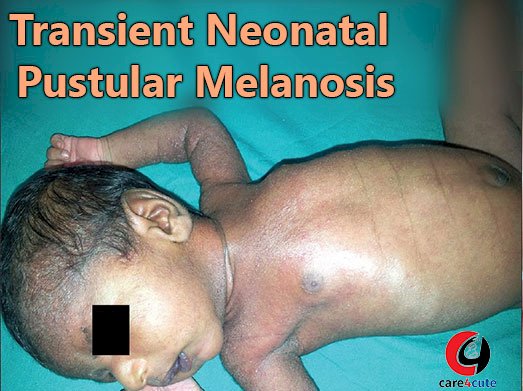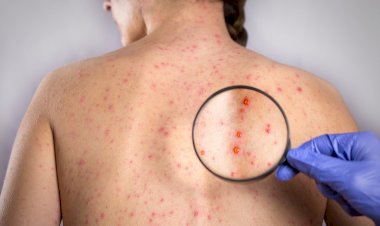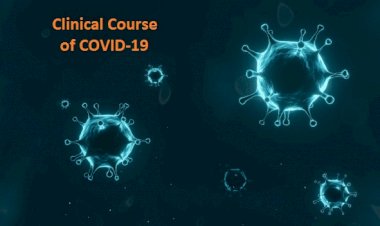Transient Neonatal Pustular Melanosis

Transient neonatal pustular melanosis
Transient neonatal pustular melanosis is an idiopathic and noninfectious pustular eruption. Transient neonatal pustular melanosis (TNPM) is a harmless skin condition of newborns. It heals with brown pigmented macules. TNPM is more common in black neonates, and is probably the reason for the so-called lentigines neonatorum noted in 15% of black newborns. The lesions are almost invariably present at birth with 1–3 mm, flaccid, superficial, fragile pustules with no surrounding erythema. Usually distributed over chin, neck, forehead, back, and buttocks, even palms and soles may be involved. Eventually the pustules rupture and form brown crust and finally a small collarette of scales. Sometimes pigmented macules are already present at birth. The pigmentation may persist for about 3 months but the affected neonates are otherwise entirely normal. It has been suggested that it is merely a variant of ETN and their description has been separated for the sake of clarity.
Smear from pustules content reveals predominance of neutrophils with occasional eosinophils on Wright stain preparation. Bacterial culture is negative. On histopathology pustular lesions show intra- or subcorneal collections of neutrophils with a few eosinophils. The pigmented macules demonstrate basal and supra-basal increase in pigmentation, without any pigmentary incontinence.
Treatment:-
Like ETN, TNPM also needs no treatment and it resolves spontaneously.






































Comments (0)